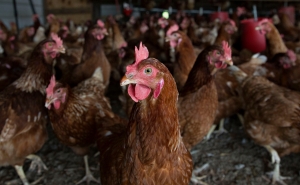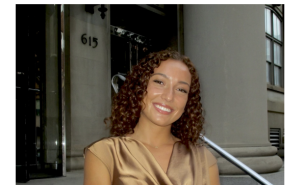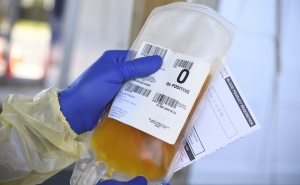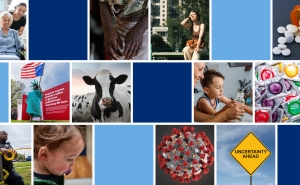Is It Safe to Reopen U.S. Schools During the COVID-19 Pandemic?
The science and solutions that can make schools safer
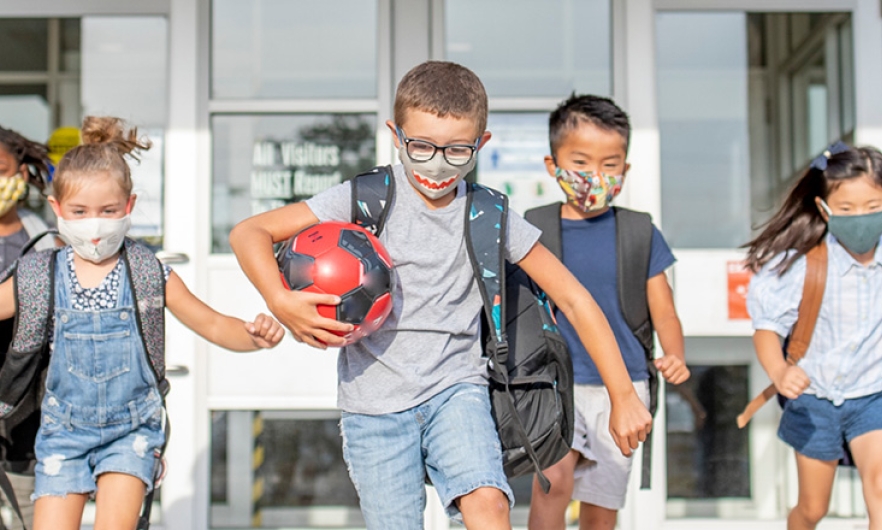
INTERVIEW WITH CAITLIN RIVERS BY JOSHUA SHARFSTEIN
Is it safe to open schools, what data should districts consider, and what measures can help reduce risks?
In this Q&A adapted from the February 12 episode of the Public Health On Call podcast, Caitlin Rivers, PhD, MPH, talks with Joshua Sharfstein, MD, about getting kids, teachers, and staff safely back in schools.
Is it safe to open schools?
Schools can be made safe, but they are not inherently safe.
If we think a little bit about what goes into making schools safe, there are a few big elements. One is community prevalence: In places where there is a lot of viral transmission, it will be more difficult for schools to be safe, just because there will be so many introductions of cases into schools.
The second important bit is how we act in schools and what mitigation measures we put in place to prevent transmission among the people in the school building. These are all of the things that we’re all familiar with now, after a year of implementing them in our own lives—masks, distancing, testing. [Testing] I think, is a big one—[and] pods, particularly, for younger children. These are all measures that can help to reduce risk in school buildings, and can help to get kids back in the classroom safely.
Where does the data fall in terms of how much virus in the community makes it concerning to even try to open schools?
There is adequate convergence on what thresholds or what epidemiological indicators we look at to understand the risk to schools. The CDC has a nice table on their website that lays out a few suggestions, [and] their highest risk category tops out at 15 cases per 100,000 per day. Some may go up to 20 or 25, but it’s generally in that range where schools are thought to be safer.
In the United States, we are currently around 46 cases per 100,000 per day, well above the recommended upper threshold. But the good news is that we are coming down that mountain. Just a month ago, we were at 76 cases per 100,000 per day. So now we’re headed in the right direction, and that bodes well for school reopening.
When [this] first started, some thought it might need to be three or five per 100,000. And it sounds like you’re saying, over time, the evidence on transmission and the experience of other school systems that have opened have pushed that number up—but it has an upper bound.
When we talk about what is safe, it matters a lot how we incorporate mitigation measures.
If you are down around three cases per 100,000 per day, maybe you would want to keep the masks, but you could do away with some of the distancing, or do away with some of the cohorting. As you get up into the higher levels of community prevalence, you really need to layer on more and more mitigation measures in order to continually reduce that risk. It’s a sliding scale.
Let’s talk about the mitigation measures. Let’s say that there is a reasonable amount of community transmission. And you’re in charge of reopening schools. What are the kinds of things that you would want to see in place?
I definitely recommend universal masking. So that means masks both for teachers and children. I know that it could be hard for some children to wear masks all the time. They’re not always compliant. But I think the experience of schools that have reopened has shown that children can learn to wear masks and that’s a very effective mitigation measure.
Distancing, keeping kids apart by moving desks apart and by marking places on the floor where children can stand—this will be helpful. Cohorting, where children only contact their classmates and don’t move between classrooms, is also quite effective. Those three mitigation measures are relatively easy to implement and useful.
The big lever, though, that not a lot of schools have brought to bear, is testing. The evidence is quite strong that testing once a week or, ideally, even twice a week, is very effective at reducing risk of transmission within the school building. I think that is a big area for growth to help make school safer.
If that kind of testing is available, do you think that makes it possible to open schools with higher community transmission?
Absolutely. I do think that testing buys flexibility in terms of community prevalence. So maybe instead of looking at 15 or 20 cases per 100,000 per day, you could go up to 30 cases per 100,000 per day. The exact thresholds have not been well enumerated, but you can push that ceiling up with regular testing.
There are some schools that have been able to do that kind of testing with PCR testing. But there are other technologies—not too far down the road, perhaps—that might be easier for more schools to access?
Antigen testing is the big opportunity coming down the road. Antigen tests are already in use but, for various reasons, they have not been super accessible to schools. I think that will be changing. In the coming months, there will be tens of millions of more tests on the market than are available now. And I think there will be, hopefully, more regulatory flexibility. Right now, many of those tests are not authorized for children [or] for people without symptoms. That’s something that we may see change in the coming months, as well, which would make them more accessible to schools.
Maybe there’d even be more evidence that would show how well they perform under those circumstances.
Yes, that’s the big gap that’s preventing authorization in children and people without symptoms—there’s not a very strong evidence base for how those tests performed. But as we’re able to grow that evidence base, we’ll get a better sense of whether that’s an appropriate use. The early evidence suggests it can be done. They are not as accurate as PCR tests. But if used regularly, they might be accurate enough to reduce risk meaningfully.
There are some school districts that are kind of following what you’re suggesting. There are some that have opened wider at higher levels of transmission. There are some that are still closed, despite being able to do the things that you’re recommending. Do you think that the evidence of their experience backs up your perspective on where to draw the line?
The evidence around transmission in schools and around transmission among children is really murky, and I think this is what has made school such a difficult topic.
It continues to be the case that children often do not have any symptoms at all. And if they do have symptoms, they’re quite mild. This makes it really hard to understand what transmission looks like in children. We know when we look only at symptomatic illness, there’s usually very little evidence of transmission in schools.
But when you dig a little bit deeper, I think there are some things to be concerned about. When we look at serosurveys, which identify evidence of prior infection, we see that children are infected at rates similar to adults. That suggests that there’s more happening underneath the surface then we’re able to see.
There have also been some interesting studies that regularly administered PCR tests to children, particularly those who have been in close contact with someone who was infected. And they, again, find that children are completely able to be infected and transmit to others. It’s just somewhat hard to detect and maybe a little bit less frequent. But these lines of evidence, taken together, suggest that we do have reason to continue to be careful about reopening schools.
What about variants of the novel coronavirus? How does that development change the situation for schools?
It’s something to keep an eye on, for sure. We have seen [that] the B.1.1.7 variant, which is the variant that was first identified in the UK, has made it more difficult for multiple European countries to keep their schools open. Several places had to close schools after committing to having them open during the winter.
It may be a challenge we face. Right now, we know that variant is circulating in the United States, but does not constitute a big fraction of cases. So it’s something to watch, but it’s not currently playing a big role in school reopening decision making.
What about the actual experience of districts? Have you seen that when districts open too much, too quickly, that there are outbreaks and problems with teachers getting sick?
There have been many documented outbreaks in schools. Thankfully, they are generally quite limited—although, again, I think there may be more happening underneath the surface there than we see. But on average, I would say the experience of school districts that have reopened with those mitigation measures is very encouraging and bodes well for school reopening.
What would you say to people who are nervous about the unknowns of school reopening and are worried that maybe we don’t fully appreciate the potential danger?
It’s true there are unknowns here, and this is a particularly difficult area of policy, because we care a great deal about children and educators and keeping them safe and healthy. But we have also seen that, over the last year, it’s been really hard on children to not be in the school building. And I think balancing these competing priorities is really tricky.
Even for children who have the opportunity or the option to go back in person, some will choose to continue remote learning, either because they are not comfortable, their families are not comfortable returning to the classroom, or because they have an underlying health condition that makes it inadvisable. As we move toward school reopening and a return to in-person learning, we also need to continue to commit to making remote learning equitable, accessible, and effective, because there will be some fraction of children and educators who will need to continue online.
And now we have vaccines. How do you think that changes things?
The good news is that many states have chosen to make educators among the first people to be eligible to receive the vaccine. That’s a really great option for protecting teachers and staff and making sure that they are safe to return to the classroom—I definitely support that as a priority. One thing that’s important to remember, though, is that children under the age of 16 are not authorized to receive the vaccine.
So, schools will still be susceptible to outbreaks, because we will still be bringing together one or two dozen children who are vulnerable into a classroom. Although kids do not experience severe illness on average, the concern would be that there would be an outbreak in the classroom and they would bring the virus home to their families, and those households may have people who are vulnerable. I think we should certainly proceed with vaccinating educators, but also need to continue focusing on making schools safe.
If there’s a lot of virus in the community, then we still need precautions in schools, even if all the adults are vaccinated?
I think we will need precautions in schools for quite a while, in fact, because there are no vaccines right now available for children. On a societal level, the vaccine will reduce community prevalence. It will indirectly help with school reopening. I just don’t want it to be the case that, as soon as teachers and staff are eligible to get the vaccine, that we slow down on mitigating transmission in the classroom. We need to continue to keep it up.
There are some funds that are becoming available for schools as a result of legislation. Do you see the big investments as helpful to the cause of reopening schools?
I think so. All of these mitigation measures cost money. They’re very expensive for schools that may be accustomed to running on a shoestring budget. If we want schools to be able to improve ventilation, to have additional cleaning, to provide masks to people in the community—all of those things cost money. We need to be ready to support schools in reopening, particularly because this has to be one of our society’s top priorities. Getting kids back into the classroom safely is a priority, really, across the board, and so we need to fund it accordingly.
So you see the science to support reopening with reasonable levels of community transmission and precautions and, hopefully, the funding that can make a lot more school systems ready to go?
That’s right. I think there will be many more opportunities over the coming semester than there were in the fall to reopen schools safely.
I just want to make sure that we maintain those precautions and ensure that our children and our educators in our community, as a whole, are protected.
Joshua Sharfstein, MD, is the vice dean for Public Health Practice and Community Engagement and a professor in Health Policy and Management. He is also the director of the Bloomberg American Health Initiative and a host of the Public Health On Call podcast.
Caitlin Rivers, PhD, MPH, is a senior scholar at the Johns Hopkins Center for Health Security.
RELATED CONTENT
Public Health On Call
This Q&A is excerpted from the February 12 episode of the Public Health On Call Podcast.

